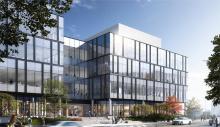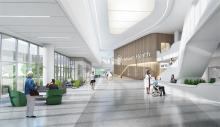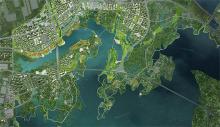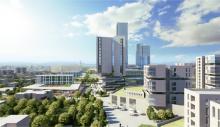What Are the Steps of 3D Rendering?
In the digital era, 3D rendering technology is now longer new, and it has become an important means for major corporations to conduct business. It is possible to produce ultra-realistic animations with visualizations there are so similar to the real item that they are basically identical using 3D realistic rendering technology.
3D rendering technology can be used in almost every business, including architecture, gaming, entertainment, and marketing. Because of its obvious benefits, 3D rendering is popular. So, what are the particular processes for putting 3D rendering into practice? You are invited to read the following presentation.
Ⅰ. Step 1 of 3D visualization rendering: Analyze the client's requirements
The initial stage in the procedure is to get to know the requirements of the client. If the client is not satisfied, the project will fail. As a result, before beginning the job, you must completely comprehend the client's requirements. You must obtain as much information about the project as possible from the customer, and if you come across any issues that you are unsure about or cannot fully comprehend, you must contact with the client as soon as possible to ensure that you get it right in the initial phase of the project.
Ⅱ. Step 2 of 3D visualization rendering: Project design and analysis
In the process of 3D visualization rendering, project design and analysis is also highly significant, as it allows for a clear description of every requirement of the project, including textures, color specs, and other issues that need to be focused on. This step has been developed to speed up the overall project process and allow for a smoother and faster transition to the next stage – design.
Ⅲ. Step 3 of 3D visualization rendering: 3D modeling
The following phase is to begin the designing or 3D modeling process, which is followed by the inclusion of textures, materials, and colors to provide more objects to work with, and, depending on the software used, to simplify some of the job's operational aspects. It is because the quality of the textures and colors used in the final 3D realistic rendering result is critical.
Ⅳ. Step 4 of 3D visualization rendering: Lighting, 3D rendering, and optimization
Because the goal is to make the finished project as realistic as possible, the step necessitates a high level of awareness of light and shadow and its concepts. In order to generate the appropriate atmosphere, it also takes careful consideration and ingenuity. The final product's realism is the most crucial factor in 3D visualization rendering. Time is equally vital, but it's necessary to remember that only enough investment of time can yield a wonderful result. Finally, the final result is the feedback from the clients.
As a result, it is clear that 3D visualization rendering is important in corporate business. As technology advances, it will become a mainstream trend that major corporations will embrace.








